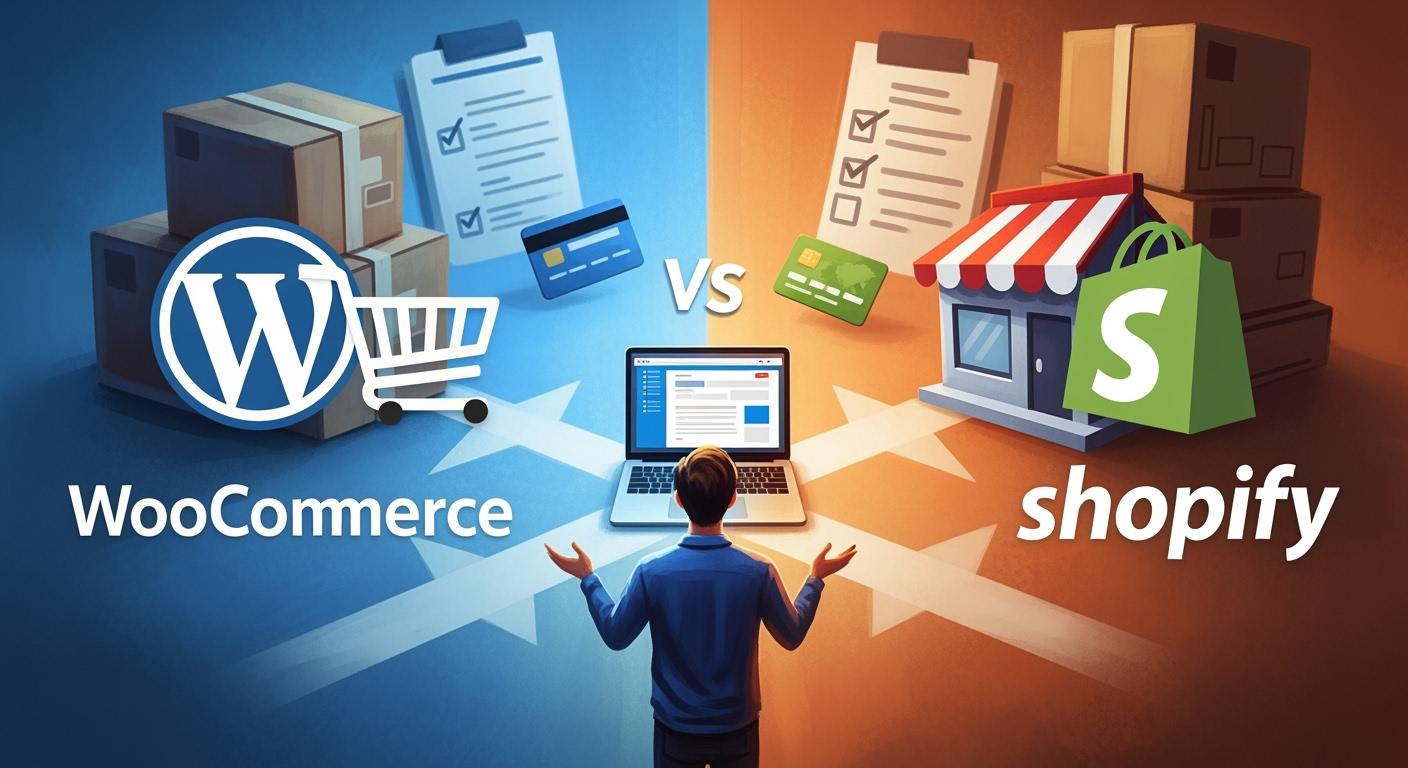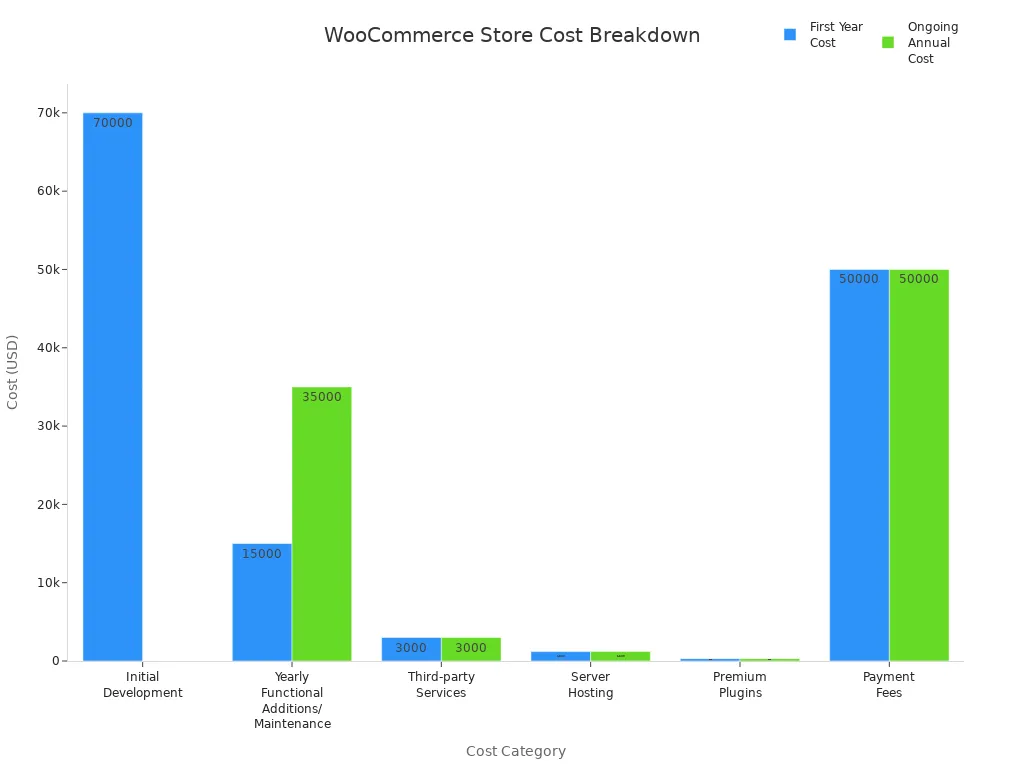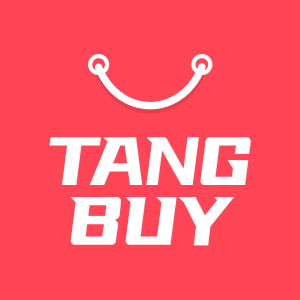WooCommerce vs Shopify Which One Makes Starting an Online Business Easier

Comparing Key Features of Two Platforms
Explore the differences between WooCommerce and Shopify for online business.
Features | WooCommerce | Shopify |
|---|---|---|
Ease of Use | Needs WordPress setup, more tech knowledge | Easier for beginners, plug-and-play solution |
Customization | Fully customizable, open-source | Limited themes and apps |
Pricing | Free but needs hosting and plugins | Subscription model with added costs |
Scalability | Needs hosting upgrades, almost no limits | Easy scaling at higher levels |
Security | Needs active management | Handles SSL and rules |
Support | Community forums and outside help | 24/7 live support |
SEO and Marketing | Advanced SEO changes with plugins | Basic SEO tools |
If you want to start selling online easily, Shopify is simple to use. You sign up, choose a theme, and add your products. On the other hand, WooCommerce lets you change more things in your store. You can make your store look and work how you want. The biggest differences in the woocommerce vs shopify debate are in setup, tech skills, cost, features, help, and how easy it is to use. Here is a quick way beginners compare woocommerce and shopify:
Factor | Shopify | WooCommerce |
|---|---|---|
Ease of Use | Easier for beginners, plug-and-play solution | Needs WordPress setup, more tech knowledge |
Customization and Flexibility | Limited themes and apps | Fully customizable, open-source |
Pricing | Subscription model with added costs | Free but needs hosting and plugins |
Scalability | Easy scaling at higher levels | Needs hosting upgrades, almost no limits |
Security | Handles SSL and rules | Needs active management |
Support | 24/7 live support | Community forums and outside help |
SEO and Marketing | Basic SEO tools | Advanced SEO changes with plugins |
You do not need to worry if you are not good with technology. You can see the main differences in this easy side-by-side chart comparing woocommerce vs shopify.
Key Takeaways
Shopify is simple for new users. You can make your store fast without knowing much about tech.
WooCommerce lets you change more things. You can adjust almost everything, but it takes more time to set up.
Shopify gives help all day and night. You can get support anytime by chat, email, or phone.
WooCommerce does not cost money to use, but you must pay for hosting and plugins. These costs can add up.
Shopify has security built in. You do not need to handle security by yourself.
WooCommerce gives you lots of control over your store. You can add many plugins for more features.
Shopify lets you open your store in a few hours. WooCommerce might take a few days to set up.
Pick Shopify if you want to start fast and have less trouble. Pick WooCommerce if you want more control and ways to change your store.
WooCommerce vs Shopify: Quick Comparison
Ease of Use
When you look at ease of use, you want a platform that feels simple from the start. Shopify stands out for beginners. You get a dashboard that is easy to understand. You can drag and drop items, pick a theme, and launch your store in just a few hours. You do not need to know any code or have special tech skills.
WooCommerce gives you more control, but you need to set up WordPress first. You also need to install plugins and pick a theme. This takes more time and effort. If you like to tinker and want to learn, WooCommerce can be fun. If you want to get started fast, Shopify is the winner.
Here’s a quick look at how users rate ease of use:
Feature | WooCommerce | Shopify 🏆 |
|---|---|---|
Setup | Manual setup | Automated wizard |
Design | Your own design | Pre-designed themes |
Launch Time | Longer | Quicker |
When people say WooCommerce is cheaper, they don't factor in the cost of their time configuring it and customizing it. And there are crucial tasks like speeding the site up, backing up, picking the web host with high uptime. Shopify, you can start in a weekend.
Overall, Shopify is more user-friendly, especially if you are new to online stores. WooCommerce gives you more freedom, but you need to spend more time learning.
Setup Steps
The setup process is a big part of the woocommerce vs shopify debate. Shopify makes it easy. You sign up, pick a theme, add your products, and you are ready to go. Most people can launch a Shopify store in two to four hours. You do not need any special skills.
WooCommerce takes longer. You need to get hosting, install WordPress, and then add WooCommerce. You also need to set up your theme and plugins. This can take three to seven days, especially if you are new to WordPress.
Platform | Technical Skill Required | |
|---|---|---|
Shopify | 2-4 hours | None (drag-and-drop) |
WooCommerce | 3-7 days minimum | Intermediate (WordPress knowledge helpful) |
If you want to launch your store quickly, Shopify is the clear choice. WooCommerce is better if you want to customize every detail and do not mind a longer setup.
Pricing

Pricing is another key factor in the woocommerce vs shopify comparison. WooCommerce is free to use, but you need to pay for hosting, your domain name, and any premium themes or plugins you want. These costs can add up, especially if you want extra features.
Shopify uses a subscription model. You pay a monthly fee, and this covers hosting and support. You may also pay transaction fees unless you use Shopify Payments. The pricing is clear, so you know what to expect each month.
WooCommerce: Free to use but incurs costs for hosting, domain registration, and premium themes/plugins.
Shopify: Subscription model with clear pricing tiers that include hosting and support, but transaction fees apply unless using Shopify Payments.
Flexibility: WooCommerce offers more customization but requires technical management, while Shopify is more straightforward for non-technical users.
If you want a simple, all-in-one price, Shopify is easier. If you want to control your costs and pick your own tools, WooCommerce gives you that freedom.
Features
When you look at features, you want to know what you get right away. Shopify gives beginners lots of tools. You get security built in, an SSL certificate, and PCI-DSS compliance. This keeps your store safe for customers from the start. Shopify also has marketing tools. You can sell on Facebook, Instagram, and other places. You can manage products, check inventory, and set up shipping with a few clicks.
WooCommerce lets you build almost anything you want. But you need plugins for many features. You can manage products and set up shipping. You must take care of security yourself. If you want to sell on social media or use advanced marketing, you need extra plugins. Here’s a quick list of what stands out:
Shopify: Built-in security, multichannel selling, easy product management, and shipping tools.
WooCommerce: Flexible product management, plugin-based marketing, and shipping options.
If you want everything ready, Shopify makes it simple. WooCommerce gives you more choices, but you need to set things up.
Support
Support is important if you have problems. Shopify is great here. You get help any time by phone, live chat, or email. If you have trouble, you can talk to someone fast. Shopify also has a big help center with guides and tutorials.
WooCommerce is different. You use community forums, guides, and email support. There is no live chat or phone help. If you like to solve problems yourself or ask other users, WooCommerce works. If you want quick answers, Shopify is better.
Here’s a quick table to show the difference:
Feature | WooCommerce | Shopify |
|---|---|---|
Support Hours | Community forums, email | |
Immediate Assistance | No | Yes |
Help Resources | Limited | Extensive help center |
Customization
Customization is a big part of the woocommerce vs shopify debate. WooCommerce gives you lots of options. You can pick from over 100 themes and change your store’s look. You can add plugins for new features. You can even change the code if you want something special. This is good if you want full control.
Shopify has many free and paid themes. You can change colors, fonts, and layouts easily. Shopify makes things simple, so you do not need to worry about breaking your site. You get less flexibility, but your store still looks professional.
Here’s a quick comparison:
Feature | WooCommerce | Shopify |
|---|---|---|
Themes | Many free and paid themes | |
Customization Flexibility | Very flexible | Easy, but less flexible |
Plugins | Needed for extra features | Most features built-in |
If you want to change every detail, WooCommerce is best. If you want a store that looks good with less work, Shopify is easier.
Setup Process

WooCommerce Setup
Hosting & WordPress
When you start with WooCommerce, you first need a place for your website to live. This means picking a hosting provider. Hosting is like renting space on the internet for your store. After you choose a host, you install WordPress. WordPress is the platform that runs your website and lets you add WooCommerce. You have to set up your domain name, which is your store’s address online. This part takes a bit of planning, but you get to pick exactly where and how your store will run.
Installation
Once you have WordPress ready, you can install WooCommerce. Here’s a simple step-by-step guide to get your store up and running:
Set up your hosting and install WordPress.
Add the WooCommerce plugin from the WordPress dashboard.
Follow the WooCommerce setup wizard to configure your store.
Add your products, including pictures and prices.
Set up payment methods so customers can pay you.
Configure your tax settings to match your business needs.
You can add more features with plugins, but these steps will get your store online. WooCommerce gives you lots of control, but you do need to handle each step yourself.
Shopify Setup
Account Creation
Shopify makes starting your store feel easy. You just sign up for an account on their website. Shopify guides you through the first steps, so you never feel lost. You pick a store name and answer a few questions about your business. You don’t need to worry about hosting or installing software—Shopify takes care of that for you.
Store Launch
After you create your account, you can launch your store in just a few steps:
Set up your domain by connecting an existing one or buying a new one.
Choose a theme and customize your homepage, contact page, and checkout page.
Add your products and organize them into collections.
Set up shipping rates and delivery options in your store settings.
Activate payments using Shopify Payments or another payment gateway.
Add extra pages, like an About page, if you want.
Install apps from the Shopify App Store to add more features.
Place a test order to make sure everything works.
Remove password protection to open your store to the public.
Shopify’s setup process is quick and guided. You can launch your store in a day if you want.
Technical Skills Needed
WooCommerce Requirements
With WooCommerce, you need to feel comfortable with a few technical tasks. You must install WordPress, manage plugins, and handle updates. You also take care of your store’s security and backups. If you like learning new things and want full control, WooCommerce is a good fit.
Shopify Requirements
Shopify is built for beginners. You don’t need to know how to code or manage hosting. Shopify handles security, updates, and backups for you. You just follow the steps, and your store is ready. If you want a simple setup, Shopify is the easier choice.
Here’s a quick table to compare the technical skills needed:
Feature | WooCommerce | Shopify |
|---|---|---|
Ease of Use | Manual setup, WordPress knowledge helps | Beginner-friendly, guided setup |
Flexibility | Very flexible, more options | Easy to manage, less technical |
Security | You manage security and updates | Shopify handles security and updates |
Support | Community and hosting support | 24/7 live chat, email, phone support |
When you look at woocommerce vs shopify, Shopify is the clear winner for anyone who wants to get started fast without learning a lot of technical skills. WooCommerce is great if you want to customize every detail and don’t mind a bit of a learning curve.
Time to Launch

When you want to start selling online, time matters. You probably want your store up and running as soon as possible. Let’s look at how long it usually takes to launch a store with WooCommerce versus Shopify.
Shopify makes the process quick. You sign up, pick a theme, add your products, and you’re almost ready to go. Most people can launch a Shopify store in just a few hours. You don’t need to worry about hosting or installing software. Shopify guides you step by step, so you never feel lost.
WooCommerce gives you more control, but it takes longer to set up. You need to choose a hosting provider, install WordPress, and then add the WooCommerce plugin. After that, you set up your theme, add plugins, and configure your store settings. If you’re new to WordPress, this can take several days. You might spend extra time learning how everything works.
Here’s a simple table to show how the two platforms compare when it comes to launch speed:
Platform | Average Launch Time Comparison |
|---|---|
Shopify | |
WooCommerce | 70% slower than Shopify |
You can see that Shopify lets you launch your store much faster. If you want to start selling this weekend, Shopify is the easier choice. You can go from idea to live store in less than a day. You just follow the prompts, fill in your details, and your store is ready for customers.
With WooCommerce, you get more options to customize your store. This flexibility comes with a longer setup time. You might need to watch tutorials or read guides. You may also want to test different plugins or themes before you go live. If you enjoy building things and want to make your store unique, you might not mind the extra time.
Tip: If you want to launch fast and focus on selling, Shopify is a great pick. If you want to build every part of your store yourself, WooCommerce gives you that freedom, but you’ll need more patience.
Pricing and Costs
When you compare WooCommerce and Shopify, you want to know how much money you’ll spend to run your store. Let’s break down the costs for each platform so you can see which fits your budget.
WooCommerce Costs
Initial & Ongoing Expenses
With WooCommerce, you start with a free plugin, but you pay for other things. You need a domain name, hosting, an SSL certificate, and maybe a premium theme. You also pay for plugins if you want extra features. Here’s a table showing typical costs for a WooCommerce store:
Cost Category | First Year Cost | Ongoing Annual Cost |
|---|---|---|
Initial Development | $70,000 | $0 |
Yearly Functional Additions | $15,000 | $35,000 |
Third-party Services | $3,000 | $3,000 |
Server Hosting | $1,200 | $1,200 |
Premium Plugins | $300 | $300 |
Payment Fees | ~$50,000 | ~$50,000 |
Total | ~$139,000 | ~$89,500 |

You pay most of these costs up front. After your store launches, you keep paying for hosting, plugins, and payment fees every year.
Add-ons
You might want to add more features to your WooCommerce store. Here are some things you could pay for:
Domain name registration
Website hosting
SSL certificate
WooCommerce plugin setup
Theme and design
Third-party plugins to extend functions
Yearly maintenance fees
Payment processing fees
Third-party service subscriptions
These add-ons help you customize your store, but they can increase your total cost.
Shopify Costs

Subscription Plans
Shopify uses a monthly subscription. You pick a plan that fits your needs. Here’s a table with common costs:
Cost Category | Initial Cost (Approx.) | Ongoing Cost (Monthly) |
|---|---|---|
Basic Shopify Plan | N/A | $39 |
Shopify Plan | N/A | $105 |
Advanced Shopify Plan | N/A | $399 |
Domain Name Registration | $10 - $30/year | N/A |
Premium Theme | $150 - $350 | N/A |
Custom Development | $2,000 - $20,000 | N/A |
Payment Processing Fees | N/A | 2.4% - 2.9% + 30¢ |
Monthly Maintenance | N/A | $100 - $500 |
Apps and Extensions | N/A | $0 - $200 |
Advertising and Marketing | N/A | $300+ |
Shipping and Fulfillment | N/A | Varies |
You pay a fixed monthly fee for your plan. You also pay for your domain name, themes, and any apps you add.
Transaction Fees
Shopify charges payment processing fees. These range from 2.4% to 2.9% plus 30 cents per transaction. If you use Shopify Payments, you avoid extra fees.
App Costs
Shopify has a big app store. Some apps are free, but many cost money each month. You might pay for marketing tools, shipping calculators, or design upgrades.
Cost Comparison
When you look at total costs, WooCommerce gives you more control. You choose what to pay for, but costs can add up fast. You pay for hosting, plugins, and services. Shopify has predictable monthly costs, which makes budgeting easier. You pay for your plan, apps, and transaction fees.
In the woocommerce vs shopify debate, WooCommerce lets you customize your spending, but you need to watch for hidden fees. Shopify keeps things simple with clear pricing, but you might pay extra for advanced features. Think about what matters most to you—flexibility or predictability—before you decide.
Features and Integrations
WooCommerce Features
Product Management
WooCommerce lets you control your products easily. You can add many products and sort them into groups. You can keep track of your stock from the dashboard. You can make products with different sizes or colors. You can set up sales for certain times. You can sell digital or physical items. You can add special fields if you need them. WooCommerce helps you organize your store the way you want.
Payment Options
WooCommerce works with lots of payment gateways. You can take payments with Stripe, PayPal, and more. This helps customers pay how they like. You can add even more ways to pay using plugins. Setting up payments is simple, and you get lots of choices.
Shipping Tools
WooCommerce makes shipping easy to change. You can set one price, offer free shipping, or charge by weight. You can link your store to shipping companies with plugins. This lets you print labels and track packages. Your customers can see shipping rates right away.
Tip: WooCommerce can grow as your business grows. You can start small and add more features when you need them.
Here’s a table that shows WooCommerce’s main features for new owners:
Feature | Description |
|---|---|
You can change your store to fit your brand and add features. | |
SEO Friendly | Uses WordPress SEO tools to help your store show up in searches. |
Wide Range of Themes and Plugins | You can pick from many themes and plugins for extra things. |
Integration with Payment Providers | Works with Stripe and PayPal for easy payments. |
Grows with Your Business | The platform can get bigger as your store gets bigger. |
Shopify Features
Product Management
Shopify makes it easy to manage products. You can add items, upload pictures, and sort them into groups. The dashboard is simple to use. You can change prices or stock quickly. Shopify shows which products sell best with built-in reports.
Payment Options
Shopify has payment tools built in. You can use Shopify Payments or connect to PayPal. Everything is ready for you, so you can take payments fast. Shopify keeps payments safe and follows the rules.
Shipping Tools
Shopify gives you shipping tools right away. You can set shipping prices and print labels. You can show real-time shipping rates. Shopify works with big shipping companies. You can ship anywhere or offer local pickup.
Here’s a table with Shopify’s best features for new owners:
Feature | Benefit |
|---|---|
Marketing Analytics | Shows what works so you can improve your marketing. |
Product Analytics | Tells you which items are popular. |
Live View | Lets you see store activity as it happens. |
Scalability | Your store can grow without changing platforms. |
Reliability | Keeps your store open for customers all the time. |
Support System | You can get help any time, day or night. |
Global Reach | Lets you sell in different languages and currencies. |
Website Builder | Drag-and-drop tools make building your site simple. |
Payment Processing | Built-in payments make checkout quick and safe. |
Mobile Responsiveness | Your store looks good on phones and tablets. |
Extensions & Apps
WooCommerce Plugins
WooCommerce has over 60,000 plugins you can use. You can add tools for SEO, payments, and shipping. You can connect your store to email marketing or booking systems. There is a plugin for almost anything you want. You can change many parts of your store with these plugins.
Shopify App Store
Shopify’s App Store has more than 8,000 apps. You can find apps for marketing, email, and product displays. Many developers make apps for Shopify, so you have lots of choices. You can add new features to your store quickly.
If you want more features, both platforms have many options. WooCommerce has more plugins, but Shopify’s app store is easier to use and has lots of popular apps.
Third-Party Integrations
When you make an online store, you might want it to work with other tools. You may need to connect your store to your inventory, email marketing, or accounting software. Both WooCommerce and Shopify let you add these connections, but they do it in different ways.
WooCommerce gives you a lot of choices. You can use plugins to link your store to almost any service. You can set up QuickSync for real-time updates. This helps keep your inventory correct and stops you from selling things you do not have. QuickSync is simple to use, but you need to pay for it. If you want something special, WooCommerce lets you use API-based custom integrations. These can connect your store to big systems like ERPs or CRMs. You can make your store do almost anything you want. Custom integrations cost more money and take more time. You might need a developer to help you.
Shopify makes adding connections easy. You can find most apps in the Shopify App Store. You can add apps for email, shipping, or accounting with just a few clicks. Shopify also works with QuickSync, so your inventory stays up to date. You do not need to know how to code. If you want to move from WooCommerce to Shopify, you can use the Shopify Connector for WooCommerce. This tool helps you move your products and customers. It is not expensive and is easy to set up. The connector is best for moving stores, but it does not give real-time management.
Here is a table that shows the main types of third-party integrations you can use on both platforms:
Integration Type | Upsides | Downsides |
|---|---|---|
QuickSync | Real-time sync, automatic updates, prevents overselling, easy setup | Requires a subscription |
API-Based Custom Integrations | Fully customizable, integrates with ERPs/CRMs, scales for complexity | High costs, requires ongoing support, slow implementation |
Shopify Connector for WooCommerce | Affordable, easy to install, useful for migrations | Limited sync features, no real-time management, better for migrations |
Tip: If you want easy connections, Shopify’s app store is simple to use. If you need special links, WooCommerce gives you more choices.
Think about what your business needs. Do you want fast and easy connections? Shopify is a good pick. Do you need special features or want to link your store to big systems? WooCommerce lets you build almost anything. Both platforms help your store grow by working with other tools, but the way you set them up is different.
Support and Resources

Support and resources help you when you get stuck or want to learn. Let’s look at how WooCommerce and Shopify compare.
WooCommerce Support
Community Forums
Most help comes from WooCommerce’s community forums. Users share tips, answer questions, and give advice. You learn by reading posts and searching for answers. Sometimes, replies take longer if your question is hard.
Documentation
WooCommerce has guides for setup and fixing problems. The instructions are easy to read, but you need to follow each step. If you like reading guides, documentation is helpful.
Paid Help
You can pay WooCommerce experts for help. Many developers offer support for a fee. You get personal help when you have big problems or want special features.
Tip: WooCommerce support is best if you like solving problems or asking other users for help.
Shopify Support
Live Chat & Email
Shopify gives you help any time. You can chat, email, or call for answers. You get help quickly, even at night. This makes Shopify good for beginners who want fast support.
Help Center
Shopify’s Help Center has guides, FAQs, and videos. You search for your problem and find steps to fix it. The Help Center covers many topics, so you rarely feel lost.
Community Forums
Shopify has friendly forums where you ask questions. Other store owners share advice and help you out.
Here’s a quick comparison of support choices:
Shopify Support
Big help center with guides and tutorials
Fast answers
WooCommerce Support
Community forums and guides
No phone or live chat support
Paid help for custom needs
Learning Resources
You want to learn how to build and grow your store. Both platforms have resources for beginners. Here’s a table with some popular choices:
Resource Type | Description | Link |
|---|---|---|
Shopify Essential Training | ||
Peer support for troubleshooting and advice. | ||
Free online courses for new merchants. | ||
Video tutorials for visual learners. | ||
Guide for launching a WooCommerce store. |
You find free courses, guides, and forums for both platforms. Shopify helps you start with easy lessons and quick support. WooCommerce lets you learn at your own pace by reading guides or joining forums.
If you want fast help and guided lessons, Shopify’s support stands out. If you like exploring and solving problems, WooCommerce’s community and guides give you lots to use.
Customization & Scalability
WooCommerce Customization
Themes & Design
WooCommerce lets you change your store’s look easily. You can use the "Customize Your Store" tool. This tool helps you change your site without using code. The Pattern Assembler helps you pick fonts and colors. You can choose from 18 color sets or make your own. There are eight font sets to pick from. You can also pick header and footer styles. You can move, add, or remove homepage parts. You see changes as you make them.
Feature | Description |
|---|---|
Customize Your Store | Design without code in WooCommerce 8.8 |
Pattern Assembler | Personalize fonts, colors, and layouts |
Predefined Color Palettes | 18 options or create your own |
Font Pairings | Eight choices from WordPress Font Library |
Header/Footer Designs | Match your brand easily |
Live Preview | See changes in real-time |
You can use page builder plugins for special product pages. If you want more control, you can edit HTML, CSS, or PHP. This lets you make your store look unique.
Checkout Flexibility
WooCommerce lets you change how checkout works. You can add custom fields or move steps around. Plugins help you offer special payment choices. Customers can filter products by category, price, or features. This makes shopping easier for everyone.
Code Access
You get full access to your store’s code. You can change anything you want. You can adjust your homepage or checkout. If you know coding, you can make your store do almost anything.
Shopify Customization

Themes & Design
Shopify makes changing your store’s look simple. You can pick from free or paid themes. You can use checkboxes, swatches, and dropdowns for product choices. You can add many product option fields. You can offer gift wrap or custom engraving. Templates help you set options for many products fast.
Add text boxes, radio buttons, or color swatches
Let customers personalize items with engraving
Show or hide options with simple rules
Checkout Customization Costs
Shopify lets you change checkout, but some changes cost money. You may need paid apps or higher plans for advanced features.
Code Access Limits
Shopify lets you change theme files. But you cannot change everything. Some checkout and backend parts are locked. You can use custom CSS or HTML for design. Deep changes are not allowed.
Growth Potential
As your business grows, your store needs to keep up. Shopify is made for quick growth. You can sell many products, even over a million SKUs. You can run more than one store and sell in different places. Shopify keeps your store working well, even with lots of visitors.
WooCommerce can grow with your business too. You can add new features with plugins. You can build custom solutions for your needs. But you might need better hosting or tech help as your store gets bigger.
Feature | Shopify | WooCommerce |
|---|---|---|
Rapid growth, easy to manage | Scales well, needs more technical setup | |
Performance | High performance, reliable | Needs investment for top performance |
Customization | App store and theme editor | Extensive, code-level customization |
Multi-region | Simple to set up | More complex to manage |
Tip: If you want to grow fast and keep things easy, Shopify is a good choice. If you want full control and like learning, WooCommerce gives you more options.
User Experience
WooCommerce Dashboard
Navigation
When you open the WooCommerce dashboard, you see a lot of options. You get menus for products, orders, plugins, and settings. If you know WordPress, you might feel at home. You can move between sections, but sometimes you need to click through several menus to find what you want. The dashboard gives you full control, so you can change almost anything. You can add plugins and customize your store’s look and features. If you like exploring and tweaking settings, WooCommerce gives you that freedom.
Common Challenges
WooCommerce can feel overwhelming if you are new. You need to learn how WordPress works. You also need to handle updates and security. Sometimes, you might get stuck when a plugin does not work as expected. You may need to search for answers or ask for help in forums. If you want to make big changes, you might need to learn some code. Many beginners say they spend extra time figuring things out.
Shopify Dashboard
Navigation
Shopify’s dashboard feels simple and clean. You see clear menus for products, orders, customers, and analytics. You can find what you need with just a few clicks. The dashboard guides you step by step, so you never feel lost. You can add products, check sales, and manage your store without any confusion. Shopify keeps things easy, so you can focus on selling.
Common Challenges
Shopify makes most tasks easy, but you might want more control over how things look or work. Some settings have limits. If you want to change something special, you may need to use an app or upgrade your plan. Most beginners do not run into big problems, but you might wish for more options as your store grows.
Beginner Feedback
Many beginners say Shopify feels friendly and quick to learn. You can set up your store and start selling in a day. You do not need to worry about updates or security. WooCommerce gives you more power, but you need to learn more before you feel comfortable. Some users love the freedom WooCommerce offers, while others prefer Shopify’s simple path.
Here’s a quick table to compare dashboard usability:
Feature | Shopify | WooCommerce |
|---|---|---|
Easy for beginners, quick setup | Needs technical skills and WordPress basics | |
Some limits, easy to use | Full control, lots of options | |
Maintenance | Shopify handles updates and security | You handle updates and security |
Tip: If you want a dashboard that just works, Shopify is a great pick. If you want to dig deep and control every detail, WooCommerce gives you that power.
WooCommerce vs Shopify: Which Is Easier?
Key Differences
When you look at these two platforms, you see some big differences. These differences change how easy it is to start your store. Here are the main things to know:
Shopify handles hosting, security, and updates for you. You do not need to set up these things yourself.
WooCommerce makes you take care of hosting, security, and updates. You must set up and manage these on your own.
Shopify is known for being very easy to use. You can make a store fast, even if you have never made a website before.
WooCommerce gives you more ways to change your store, but it is harder to learn. You have to do more steps and make more choices.
Shopify lets you set up your store about 41% faster than WooCommerce. You just sign up, pick a theme, and add your products.
WooCommerce asks you to install WordPress, find hosting, and add the WooCommerce plugin. This can be hard if you are new.
Shopify’s dashboard is simple and easy to use. You do not need to know how to code.
WooCommerce lets you change almost everything, but you need more tech skills as your store gets bigger.
Shopify is made to help beginners get started fast. WooCommerce is better if you want to build a store your own way.
Best for Beginners
If you are new and want the easiest way, Shopify is the best choice. You do not need to know about websites or coding. Shopify helps you with each step, from picking a theme to opening your store. You can get your shop online in just a few hours.
WooCommerce is good if you like learning and want to control every part of your store. You need to set up hosting, install WordPress, and handle updates. This takes more time and patience. If you like to tinker and want a store that is truly yours, WooCommerce gives you that power.
Here is a quick chart to help you choose:
Platform | Best For | Why It’s Easier (or Not) |
|---|---|---|
Shopify | Total beginners | Guided setup, no coding, fast launch, all-in-one solution |
WooCommerce | Tech-savvy or curious beginners | More steps, more control, but a steeper learning curve |
Tip: If you want to start selling fast and do not want to deal with tech stuff, Shopify is the best pick. If you want to learn and change every detail, WooCommerce is worth your time.
When to Choose WooCommerce
WooCommerce is best in some situations. You might want WooCommerce if you fit one of these cases:
Scenario | Description |
|---|---|
Content-Rich Businesses | You want to mix a blog or learning content with your products. |
Custom Functionality Requirements | You need special features or unique store tools without spending a lot. |
Integration-Heavy Operations | You want your store to connect with other business tools you already use. |
Budget-Conscious Growth | You want to test features and grow slowly, paying only for what you need. |
Long-Term Thinkers | You plan to build your store for a long time and want full control over every detail. |
Think about these questions too:
Do you want your store to grow and change a lot over time? WooCommerce can grow with you.
Do you need special e-commerce features that other platforms do not have? WooCommerce lets you add almost anything.
Are you watching your budget and want to control costs? WooCommerce lets you pay only for the features you need.
If you like having choices and want a store that fits your ideas, WooCommerce is a strong pick in the woocommerce vs shopify debate.
When to Choose Shopify
You might wonder if Shopify is the right fit for your online business. Let’s break down the situations where Shopify shines and makes your life easier.
Choose Shopify if you want:
A Fast Start: You want to open your store quickly. Shopify guides you step by step. You can launch your shop in a single afternoon.
No Tech Headaches: You don’t want to deal with hosting, security, or software updates. Shopify handles all the technical stuff for you.
Simple Store Management: You like dashboards that are easy to use. Shopify’s dashboard feels clean and friendly. You can add products, track orders, and see your sales with just a few clicks.
Reliable Support: You want help anytime you need it. Shopify offers 24/7 live chat, email, and phone support. You never feel stuck or alone.
Built-In Features: You want marketing, payments, and shipping tools ready to go. Shopify gives you these features right out of the box.
Professional Design: You want your store to look great from day one. Shopify has beautiful themes that work on phones and computers.
Easy Growth: You plan to grow your business. Shopify scales with you. You can add more products, sell in new countries, or handle more customers without switching platforms.
Tip: If you want to focus on selling and not on building or fixing your website, Shopify is a smart choice.
Here’s a quick table to help you decide if Shopify matches your needs:
You Should Pick Shopify If... | Why Shopify Works Well Here |
|---|---|
You want to launch fast | Guided setup, no waiting for tech setup |
You don’t want to manage hosting | Shopify takes care of hosting and security |
You need support at any hour | 24/7 live chat, email, and phone help |
You want built-in marketing tools | Email, social media, and analytics included |
You prefer a simple dashboard | Easy navigation, no confusion |
You want to sell everywhere | Multi-channel selling (online, social, POS) |
You plan to grow your store | Shopify handles more products and traffic |
Common Scenarios Where Shopify Wins:
You’re a beginner: You have never built a website before. Shopify makes every step clear.
You want to save time: You don’t want to spend days learning new software. Shopify lets you start selling fast.
You want peace of mind: You want your store to stay safe and online. Shopify manages security and updates for you.
You want to try new ideas: You can test products, run sales, or change your store’s look without stress.
Note: Shopify is perfect if you want to spend your time growing your business, not fixing your website.
If you see yourself in these situations, Shopify will make your online business journey much easier. You get a platform that works for you, so you can focus on what matters—your products and your customers.
If you want the easiest way to start selling online, Shopify gives you a simple path. You can set up your store fast and get help anytime. WooCommerce lets you control every detail, but you need to learn more. Think about what matters most to you—speed or flexibility. No matter which you choose, you can build a great online business. You’ve got this!
FAQ
What makes Shopify easier for beginners than WooCommerce?
Shopify guides you step by step. You do not need to set up hosting or install software. You just sign up, pick a theme, and start adding products. WooCommerce asks you to handle more setup and technical details.
Can I switch from WooCommerce to Shopify or vice versa?
Yes, you can move your store. Shopify offers tools to import products and customers from WooCommerce. WooCommerce also has plugins for migration. You may need to adjust some settings after switching.
Which platform costs less to start?
WooCommerce lets you start for free, but you pay for hosting, themes, and plugins. Shopify charges a monthly fee, but hosting and security come included. Your total cost depends on the features you need.
Do both platforms support selling digital products?
Yes, both let you sell digital products. Shopify and WooCommerce support downloads, licenses, and subscriptions. You can add more features with apps or plugins if you need them.
Which platform is better for customization?
WooCommerce gives you more control. You can change almost anything with themes and plugins. Shopify lets you customize your store, but some advanced changes need paid apps or higher plans.
How do Shopify and WooCommerce handle security?
Shopify manages security for you. You get SSL and PCI compliance out of the box. WooCommerce needs you to set up SSL and keep plugins updated. You handle your own security.
Can I use my own domain name with both platforms?
Yes, you can use your own domain name on both. Shopify lets you buy a domain or connect one you already own. WooCommerce works with any domain you choose through your hosting provider.
Which platform offers better support for beginners?
Shopify gives you 24/7 live chat, email, and phone support. You get help fast. WooCommerce relies on community forums and guides. You can pay for expert help if you need it.

TangBuy: A Smarter Way to Dropship in 2025
If you're looking to stay competitive with dropshipping in 2025, speed and trend-awareness are key. TangBuy helps you stay ahead with real-time product trends, fast fulfilment, and factory-direct sourcing. With over 1 million ready-to-ship items, 24-hour order processing, and seamless Shopify integration, TangBuy makes it easier to test, scale, and succeed in today's fast-moving eCommerce landscape.
See Also
Choosing Between Shopify And WooCommerce For Your Business
Key Factors For eCommerce Success: BigCommerce Or Shopify?
Analyzing BigCommerce And Shopify: Who Comes Out On Top?

